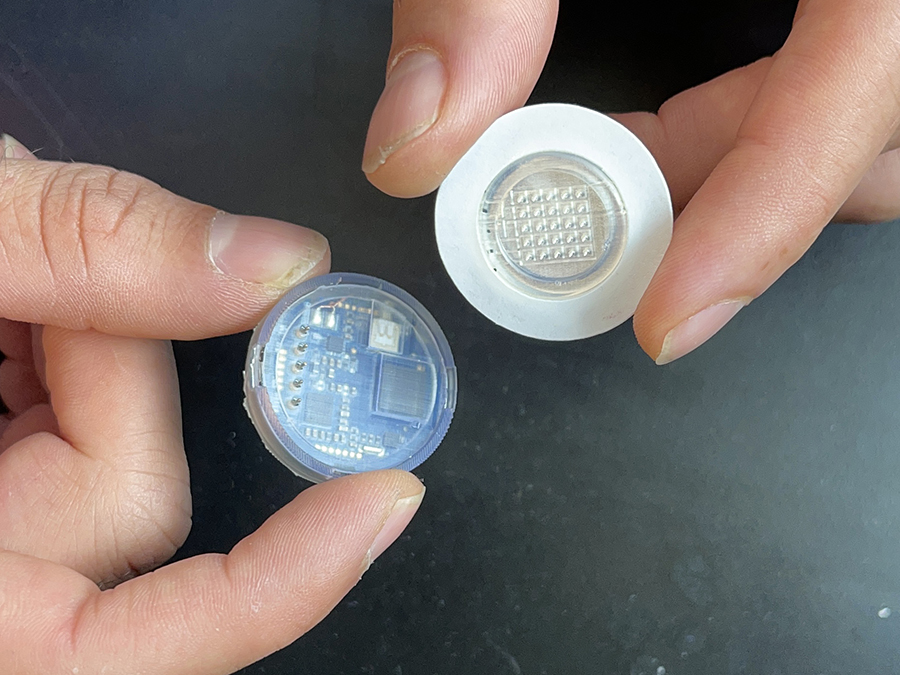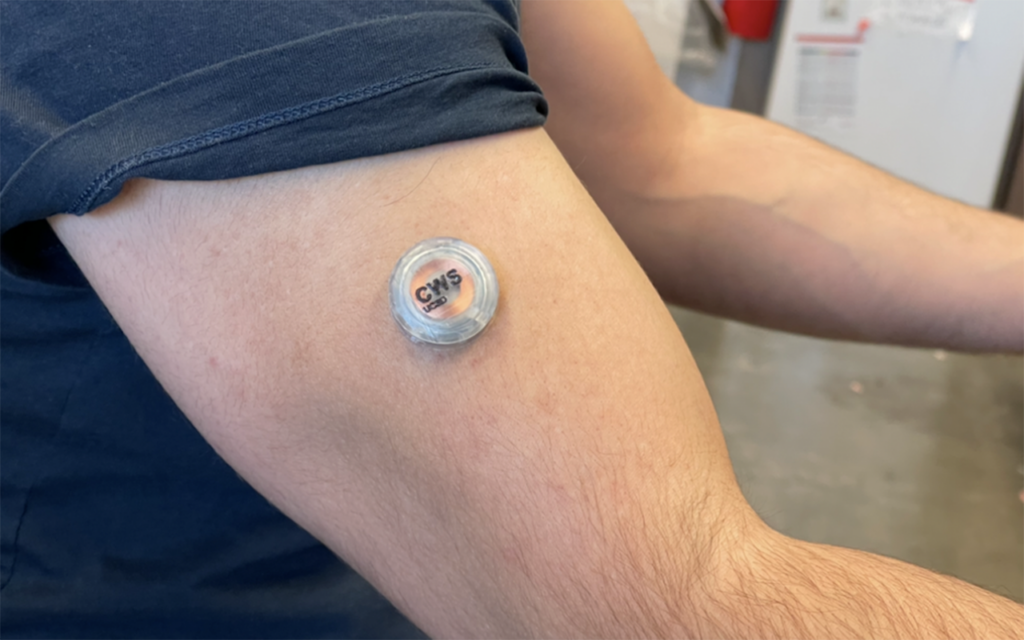Engineers at the University of California San Diego have developed a prototype for a wearable patch that can monitor alcohol, glucose and lactate levels in real-time.
Alcohol levels can be useful to measure for diabetics, as drinking alcohol can lower glucose levels. Currently, most health monitors only measure glucose.
The small, velcro-like patch of microscopic needles is worn on the upper arm, analysing biomolecules surrounding the cells beneath. As the needles barely penetrate the surface of the skin, the device is not painful.
This new technology could help wearers to prevent low blood sugar levels after drinking alcohol. “With our wearable, people can see the interplay between their glucose spikes or dips with their diet, exercise and drinking of alcoholic beverages. That could add to their quality of life as well,” says Farshad Tehrani, a nanoengineering PhD student and one of the study’s co-first authors.

“This is like a complete lab on the skin,” said Dr Joseph Wang, a professor of nanoengineering at UC San Diego and a co-author of the study. “It is capable of continuously measuring multiple biomarkers at the same time, allowing users to monitor their health and wellness as they perform their daily activities.”
The microneedle patch connects to a case of electronics, which analyses the levels of alcohol and glucose in interstitial fluid. The case can be reused and recharged on any wireless charging pad. This data is then sent wirelessly to an app, where wearers will be able to view the results on their smartphones.
Five volunteers tested the wearable while drinking a glass of wine, while the device continuously monitored their glucose, alcohol, and lactate levels. Encouragingly, the measurements closely matched results taken by a breathalyser and a blood glucose monitor.
Tehrani and fellow co-first author have founded a start-up company, AquilX, to further develop the technology for commercialisation. The research team hopes to keep testing and improve the longevity of the microneedle patch, possibly adding more sensors to monitor medication levels and detect other health signals.
Featured picture: Laboratory for Nanobioelectronics / UC San Diego
You may also like
-
Survey finds Gen Z prefer marijuana to alcohol
-
The non-alcoholic beer industry is expected to grow tenfold by 2025
-
New research suggests Minimum Unit Pricing on alcohol is hindering heavy drinkers
-
Alcohol tag scheme to expand after successful trials in England and Wales
-
Alcohol consumption in reality TV could be harmful for younger audiences, study finds

